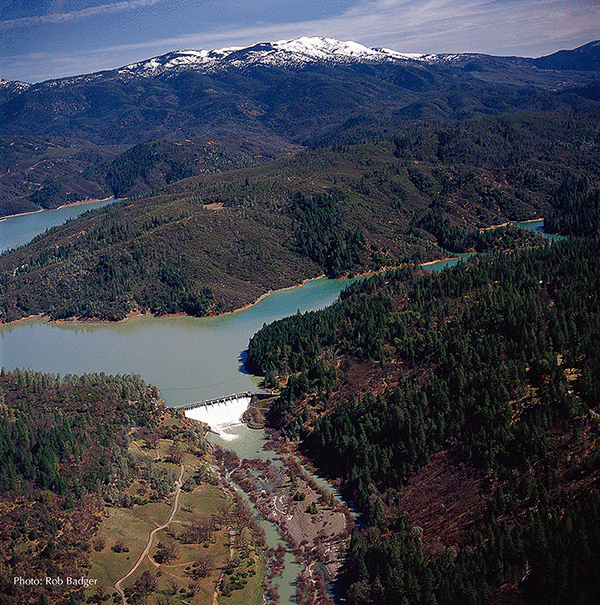California Gov. Jerry Brown made international news when he vowed to fight President Donald Trump’s attempts to cut America’s climate change research and rescind the nation’s commitment to the Paris Agreement. Brown’s commitment to fighting climate change seems real, and under his leadership, his state has engaged in numerous greenhouse-gas reduction plans. But there are caveats to his commitment, including the continued growth in fossil fuel extraction in California and the state’s near-explosive population growth, both of which drive emissions up, not down.

Twenty-five years ago, a small team of scientists in Brazil started measuring the methane produced at hydropower dams and reservoirs. Led by Philip Fearnside, the scientists found surprising results, indicating that hydropower dams and reservoirs in tropical countries like Brazil emit high levels of methane, sometimes equivalent to as much as a coal-fired power plant. Fearnside referred to these hydropower producers as “methane factories.”
The studies have multiplied over the last two decades, and in 2006, the Intergovernmental Panel on Climate Change included calculations for measuring “Methane Emissions From Flooded Land” in making national greenhouse gas inventories. Since 2006, study after study has confirmed high levels of methane emissions from dams and reservoirs, and when the Environmental Protection Agency measured methane emissions from a reservoir in the Midwestern United States in 2016, the emissions detected were as high as those measured in the Brazilian hydropower plants.
In September last year, an international team of scientists synthesized dozens of studies around the globe and found that hydropower’s methane emissions have been dramatically under-measured. This analysis, published in Bioscience and funded by the Army Corps of Engineers, the EPA and U.S. National Science Foundation, made international news with its conclusion that the Intergovernmental Panel on Climate Change needed to revise its calculations and include hydropower’s significant emissions in its climate change scenarios.
Further, another study, published in September 2016 by a team of Swiss scientists, used previous measurements at dams and reservoirs around the world to create a model that estimated methane emissions from nearly 1,500 hydropower plants and other dams and reservoirs across the planet. The study’s conclusions further rocked the climate change world: Climate change emissions from Hoover Dam and Lake Mead on the Colorado River near Las Vegas were found to be about equal to those of coal-fired power plants that produced the same amount of electricity.
Why do dams and reservoirs produce emissions like methane? The answer is that when organic material such as vegetation, sediment, algae and other runoff decomposes underwater at a reservoir, methane is released.
This is a natural process called “anaerobic decomposition,” but it is dramatically intensified in dam and reservoir systems that are not natural lakes. Take Hoover Dam and Lake Mead as an example. Lake Mead is enormous — about one-quarter the size of Rhode Island. The reservoir fluctuates over the year, causing many square miles of its banks to periodically dry up, grow vegetation, and then get flooded again each year.
Large amounts of sediment are also washed down the Colorado River every year. This sediment coats the bottom of the lake and also dries up along the miles of caked mud on the lake’s hot banks. Thus, Hoover Dam and Lake Mead work together to create a high-methane-producing hydropower system. And even though these measurements and estimates of methane are very recent, as far back as 1948, the U.S. Geological Survey was examining what it was then called “gas pits” in the mud flats of Lake Mead.
About 50 percent of Hoover Dam’s electricity is wired to the Los Angeles area. Yet no greenhouse gas emissions calculations — in Los Angeles or statewide in California — include Hoover Dam’s contribution. That’s like having a large coal-fired power plant burning in downtown Los Angeles whose climate change impact is completely ignored.
California has 1,400 dams and reservoirs. Most of them produce far less methane than Hoover Dam, but many of those dams’ emissions are neither estimated nor measured. It’s time for California to acknowledge its methane emissions from hydropower, measure them, and finally, offset or stop them.
Article by: Gary Wockner
Published: April 11, 2017 by High Country News
Read original here.
